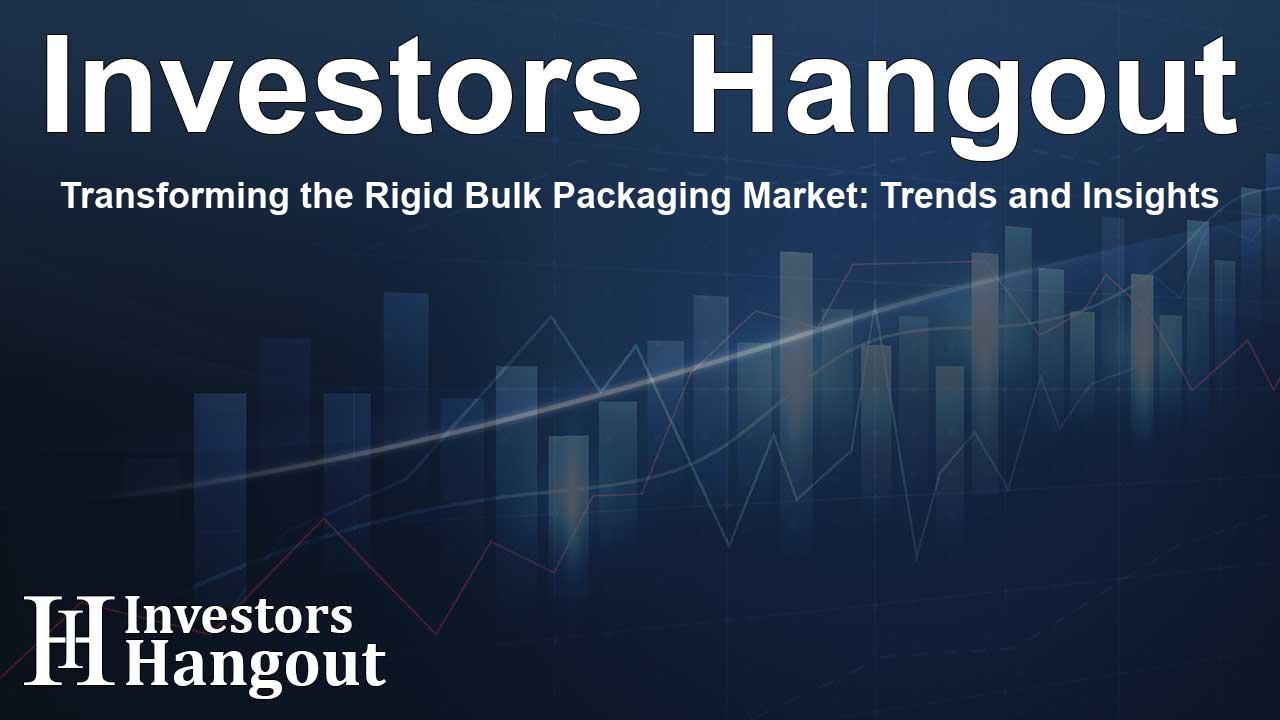Transforming the Rigid Bulk Packaging Market: Trends and Insights

The Future of Rigid Bulk Packaging Markets in Europe
The Rigid Bulk Packaging Market in Europe is on the cusp of significant transformation, driven by a range of factors including innovation in manufacturing, growing demand in the food and beverage sectors, and advancements in artificial intelligence (AI). As we look ahead from 2024 to 2028, the market is poised to witness a remarkable growth of USD 729.6 million, translating to a compound annual growth rate (CAGR) of approximately 4.8%. This growth is primarily fueled by a burgeoning wine industry, alongside a surge in free trade agreements that promote economic activity across various sectors.
Key Drivers of Market Growth
Rising Demand Across Sectors
The European market for rigid bulk packaging is experiencing increased demand not only in agriculture but also across diverse industries like pharmaceuticals and chemicals. Companies are continually innovating to meet the shifting needs of consumers who increasingly prefer sustainable and reusable packaging options. Alongside this demand, regulations are being put in place to encourage environmentally-friendly practices and packaging solutions.
Impact of Artificial Intelligence
Artificial intelligence is reshaping how businesses operate and market packaging solutions. Through AI, manufacturers can streamline their operations, optimize logistics, and enhance their product offerings, thereby providing better service to their customers. This technology-driven approach enables companies to improve both efficiency and innovation, making them more competitive in the marketplace.
Challenges Facing the Market
Fluctuating Raw Material Prices
While growth prospects in this sector look positive, there are several challenges that companies need to address. Chief among these is the instability in raw material prices. Rigid bulk packaging companies often rely on specific materials, such as high-density polyethylene, polypropylene, and recycled plastics, which can be subject to market volatility.
Regulatory Complexities
The packaging sector in Europe faces rigorous regulatory scrutiny, which can complicate compliance and influence market dynamics greatly. Companies are always looking for ways to innovate within these constraints to remain sustainable and profitable.
Market Segmentation and Key Players
Breakdown of Material Types and Products
The rigid bulk packaging market can be segmented into several materials, including plastics, metals, and woods, each serving different end-use applications. Notable products in this category include pails, drums, and intermediate bulk containers (IBCs), crucial for industries such as chemicals, food and beverage, and pharmaceuticals.
Leading Companies in the Market
Several key players lead the rigid bulk packaging market including Amcor Plc, Berry Global Inc., and DS Smith. These companies are constantly innovating their product lines and investing in sustainable practices to cater to evolving consumer needs. Their focus on sustainability and eco-friendly practices puts them at the forefront of industry advancements.
Emerging Trends to Watch
Sustainability Practices
As concerns over environmental sustainability rise, more companies are integrating recycling and sustainable production practices into their business models. The consumer market is increasingly favoring brands that demonstrate a commitment to reducing waste and utilizing environmentally-friendly materials.
Innovation in Design
Innovation also plays a critical role in the competitiveness of rigid bulk packaging. As industries evolve, so too do the designs and functionalities of packaging solutions. The industry is exploring lightweight materials and smarter designs that enhance usability and safety during transport and storage.
Conclusion: A Flourishing Market Ahead
Overall, the rigid bulk packaging market in Europe is not just a sector of growth; it’s a dynamic landscape full of opportunities for innovative companies. With the wine industry surging, alongside a strong focus on sustainability and AI-driven efficiencies, the landscape is ripe for transformation. Companies that adapt to these trends will not only survive but thrive in the coming years.
Frequently Asked Questions
What is the projected market growth for rigid bulk packaging in Europe?
The market is estimated to grow by USD 729.6 million from 2024-2028 at a CAGR of 4.8%.
Which industries drive the demand for rigid bulk packaging?
Key industries include food and beverage, pharmaceuticals, and chemicals, all showing increasing demand for reliable packaging solutions.
How does AI influence the rigid bulk packaging market?
AI improves operational efficiency, product innovation, and customer service, enhancing competitiveness in the market.
What challenges does the rigid bulk packaging market face?
Challenges include fluctuating raw material prices and complex regulatory requirements affecting compliance and market dynamics.
Who are the major players in the rigid bulk packaging market?
Major players include Amcor Plc, Berry Global Inc., and DS Smith, known for their sustainable practices and innovative product offerings.
About Investors Hangout
Investors Hangout is a leading online stock forum for financial discussion and learning, offering a wide range of free tools and resources. It draws in traders of all levels, who exchange market knowledge, investigate trading tactics, and keep an eye on industry developments in real time. Featuring financial articles, stock message boards, quotes, charts, company profiles, and live news updates. Through cooperative learning and a wealth of informational resources, it helps users from novices creating their first portfolios to experts honing their techniques. Join Investors Hangout today: https://investorshangout.com/
Disclaimer: The content of this article is solely for general informational purposes only; it does not represent legal, financial, or investment advice. Investors Hangout does not offer financial advice; the author is not a licensed financial advisor. Consult a qualified advisor before making any financial or investment decisions based on this article. The author's interpretation of publicly available data shapes the opinions presented here; as a result, they should not be taken as advice to purchase, sell, or hold any securities mentioned or any other investments. The author does not guarantee the accuracy, completeness, or timeliness of any material, providing it "as is." Information and market conditions may change; past performance is not indicative of future outcomes. If any of the material offered here is inaccurate, please contact us for corrections.